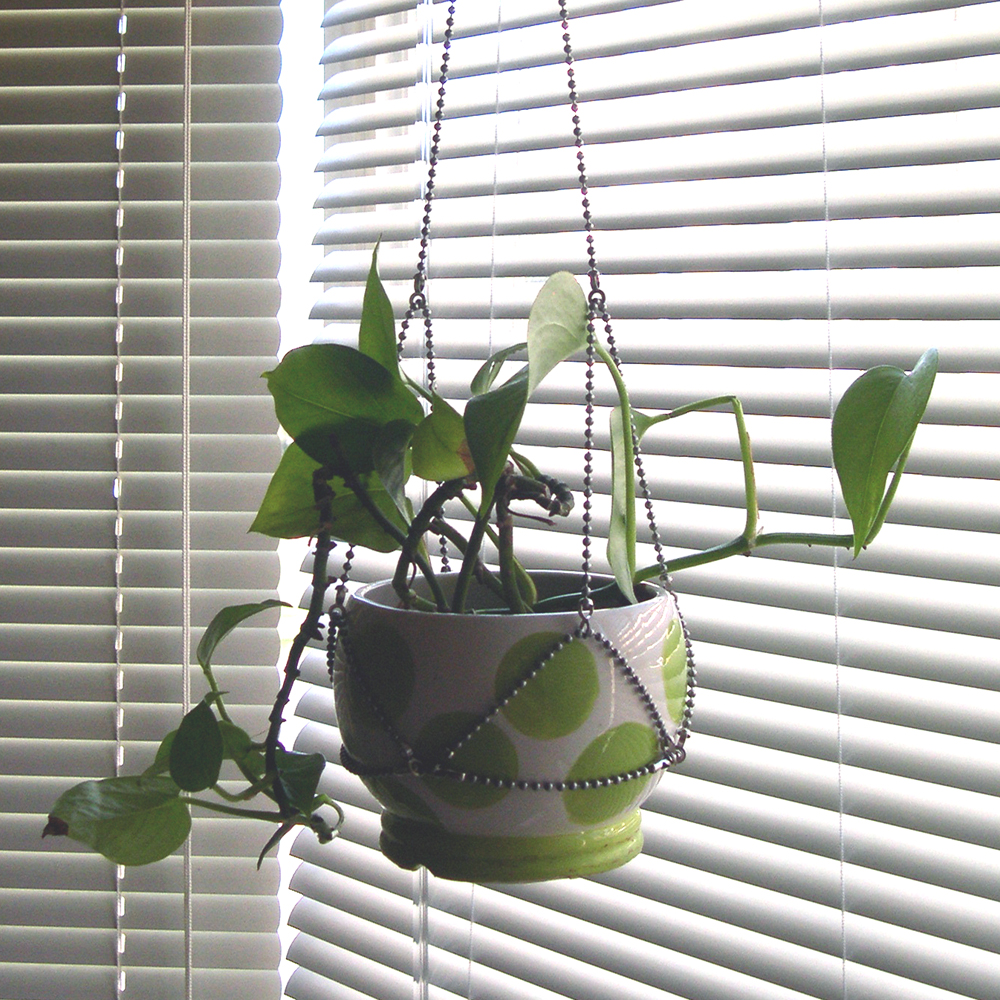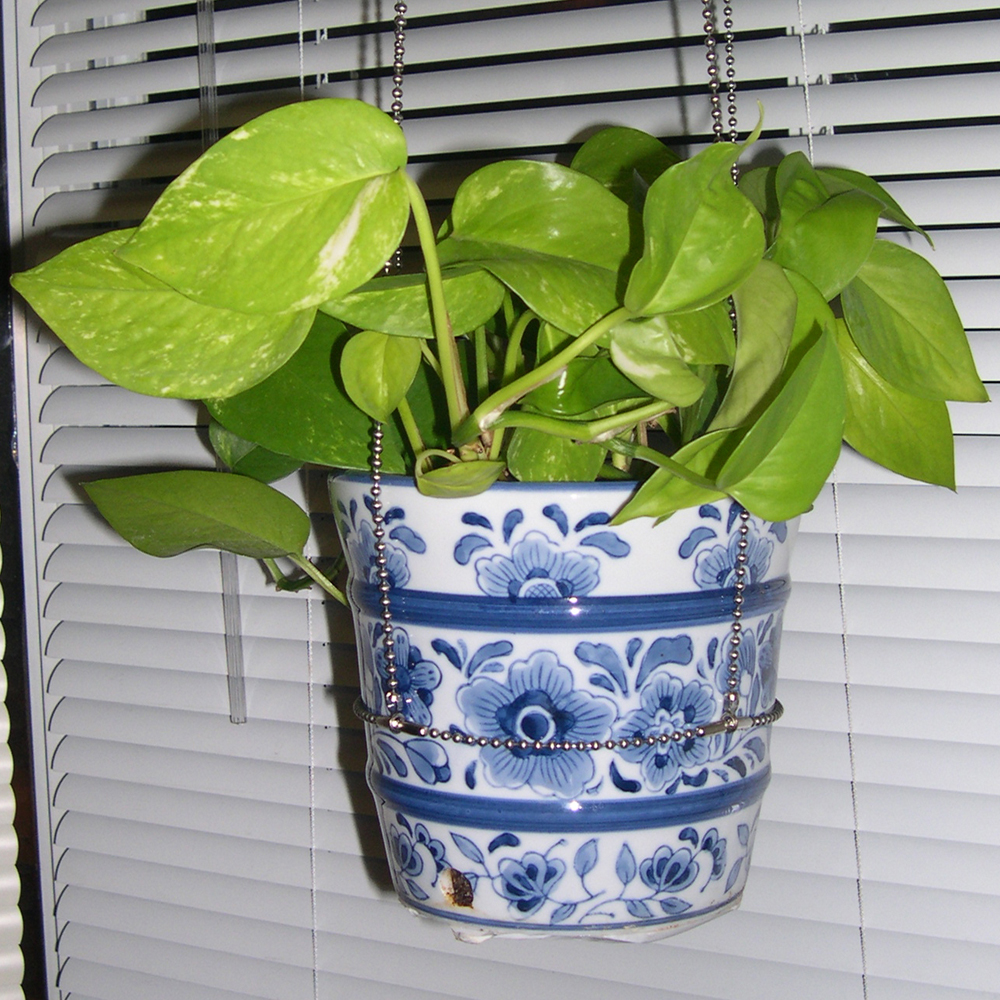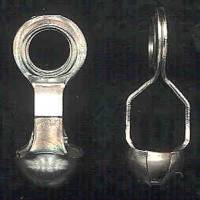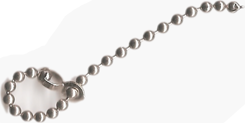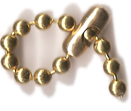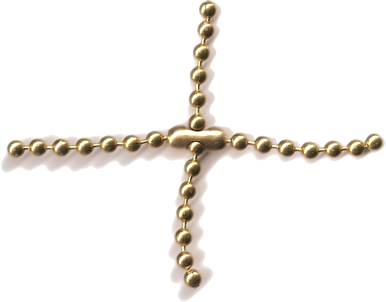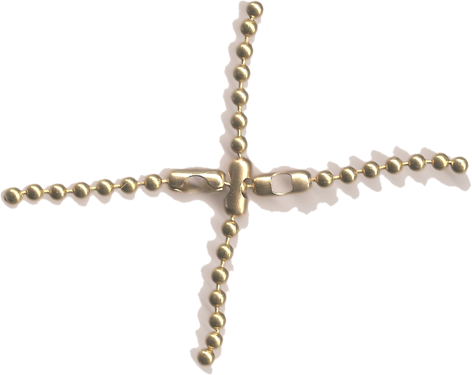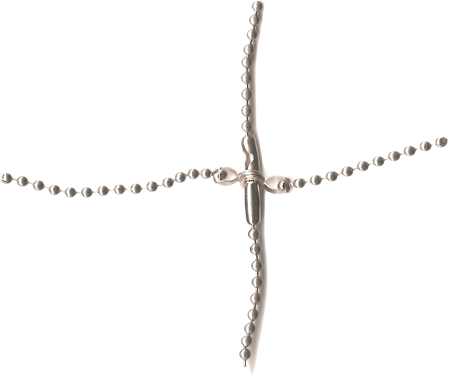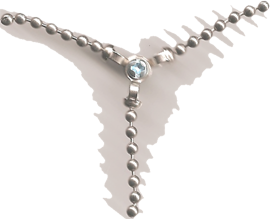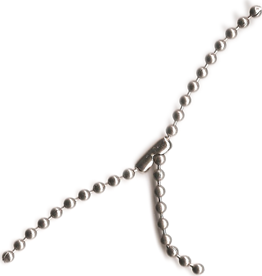[2009-03-19] Snap together plant hangers from ball chain
I love ball chain. Who doesn't? I use it whenever I have a chance. That's why I was so excited, recently, when I discovered this new ball-chain fitting at my local hardware store, Breed & Co., in Austin:
Most people are familiar with the common ball chain union that lets you join one end of a chain to another. This beastie, however, allows you to join the end of a ball chain to the middle of another. You crimp the terminating chain's last ball into the coupling and pass the continuous chain through the eye, the opening of which is just large enough to pass the spherical links. As I learned some years ago when I built this giant bouncing blue buckyball, the ability to make three-way connections between flexible beams is all you need to assemble complex geodesic structures.
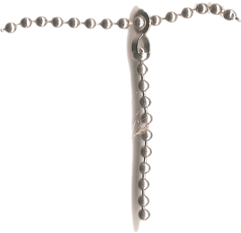
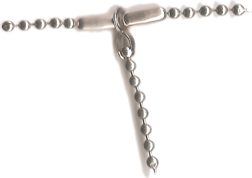
The simple three-way joint shown above provides a connection in which the coupling eye is free to slip along the length of the continuous chain. In some applications this may be desirable, but in many it will not. Fortunately, since the coupling eye is large enough to pass the chain links but not the outer diameter of the end-to-end couplings, it's easy to improvise a stationary three-way connection by sandwiching the eye coupling between a pair of "stop" end couplings, as shown. The two stop couplings are linked to one another by a short chain that is only two balls long.
The pictures at the top of the page show two different plant hangers which were assembled using ball chain, traditional two-way couplings, and the new "eye" couplings. Hangers produced in this way are cheap, good-looking, waterproof, durable, easy to assemble, and readily customized to hold whatever pot or container you want to hang up. Playing around with the various possible combinations of fittings has led me to discover a couple more interesting joints, which are shown below.
This is a super simple loop joint made with an eye fitting. The loop is adjustable as pictured, but you could fix the eye in place against a stop fitting for a fixed loop.
Here's another loop formed using the traditional end-on-end fitting. Note that some of these end-to-end couplings come with a hole in the side for this purpose, and some do not. It seems like only the larger gauge (#10 has it, #6 doesn't) end-to-end couplings include the side hole. But when it's there, it can be used to form a loop just like above, or, indeed, in most any situation where the eye fitting is used, although it won't look as neat. As before, it can be adjustable or fixed in place with one or more additional "stop" fittings.
These "hole-in-the-side" couplings make sliding four-way joints possible in the larger gauges where they are available.
And here's the fixed version of the same joint. The "stop" fittings can be hole-in-the-side or not, but the middle one, obviously, has to be.
Here's a fixed four-way joint that works even if you're working in a gauge that's too small to include the hole-in-the-side couplings. It uses two eye fittings and two end fittings. It's a bit tricky to clip the last coupling in place with two eyes sandwiched between it and the next, but it can be done. If you are willing to put an additional link in the short chain that connects the two stop couplings, you could increase the number of eye couplings that terminate in the joint.
Lots more possibilities open up if you're willing to introduce "non-canonical" ball-chain parts. Here's a symmetric three-way fitting made by securing three eye fittings together around the shaft of a screw and securing with a nut and lock washer. Joints of four, five, and higher branchings can also be achieved, but become increasingly ungainly as the thickness of the stacked eyes becomes greater.
Fixed three-way joints are possible using only a single traditional end coupling, even without the extra hole in the side. This joint, however, does not snap together. First fix one end of a length of chain into one side of the coupling as normal, then pry the other end of the coupling open to about 3 mm. Now there's room to fasten the coupling to a point midway along the second chain, after which the open end of the coupling can be crimped shut again with pliars.
There are probably some clever tricks that I've missed. Ball chain and ball chain fittings are even available in various designer colors and exotic materials. The potential applications of this technique beyond simple plant hangers are quite numerous. Ball-chain mail, anyone?
last modified 2009-03-19
sean@seanmichaelragan.com
index
